Five Things XLR8R Learned During Seven Days in Germany
Last week, XLR8R was invited (along with a crew of 15 other international journalists, radio […]
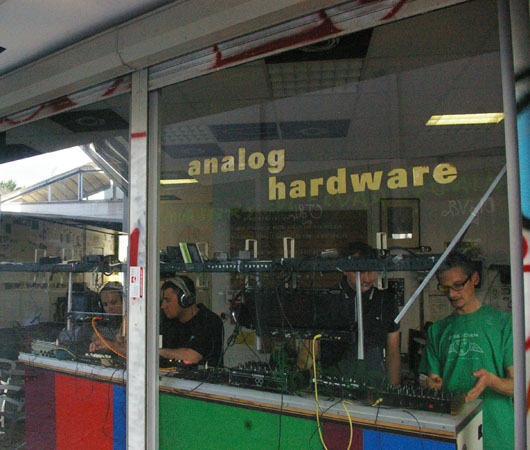
Five Things XLR8R Learned During Seven Days in Germany
Last week, XLR8R was invited (along with a crew of 15 other international journalists, radio […]

Last week, XLR8R was invited (along with a crew of 15 other international journalists, radio hosts, and promoters) to attend a seven-day tour of Germany put together by the country’s Initiative Musik organization. A sort of week-long, crash-course introduction to Germany’s contemporary cultural and musical movements, the trip stopped off in Cologne, Düsseldorf, Berlin, and Hamburg—four of the country’s major metropolitan centers—with the aim of giving the program’s participants an overview of those cities’ cultural climates while also illuminating pockets of underground scenes less familiar to those who live beyond Germany’s border. After a week’s worth of cultural absorption, discussion, and—let’s be honest here—a lot of German beer, XLR8R left with a new appreciation and understanding of Germany’s cultural and musical landscape; with the aid of hindsight, reflection, and a few days to recover from our jetlag, we’ve distilled our experiences down to the five most poignant realizations we had during our seven days in Germany.
Coma performing at Kompakt
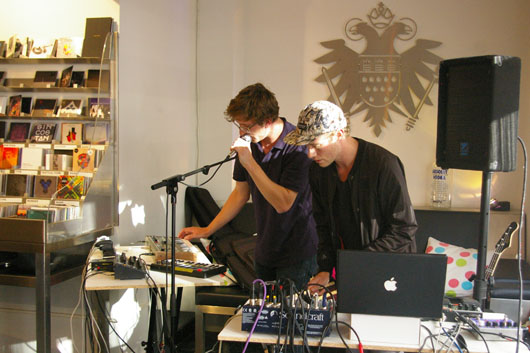
Kompakt is a model of what independent record labels can accomplish.
The tour’s first stop was in Cologne (alternately spelled “Köln” in its native language), Germany’s fourth-largest city and a hub for professional and commercial media organizations, most notably RTL, the country’s largest private broadcaster. Over the past few decades, the city has also proven to be a successful breeding ground for art and music, not the least of which has seen Cologne serve as home to the legendary Kompakt record label. In the midst of celebrating its 20th anniversary, Kompakt is an imprint that has diligently built a substantial catalog and reputation in the techno and electronic-music world despite its humble beginnings as simply a record store (originally under the name Delirium).
On the day of our visit, Kompakt co-owner Reinhard Voigt gave us a tour of the label’s current brick-and-mortar facility—a building which now incorporates a record store, the label’s and agency’s offices, physical media storage facilities (i.e. records and CDs), and a number of production studios. Furthermore, the top floor of Kompakt HQ is almost entirely dedicated to being a space to enjoy a meal or conversation with coworkers and visitors, boasting a full kitchen and chefs preparing meals during the weekdays. Clearly, an emphasis on creating a “community” or “family” within the label has been a major focus, and by housing many of the company’s arms under one roof, a constant crossing of ideas and duties is possible.
Top: Kompakt’s record store; Bottom: Kompakt’s office
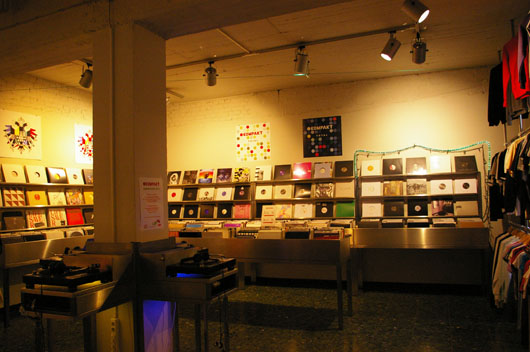
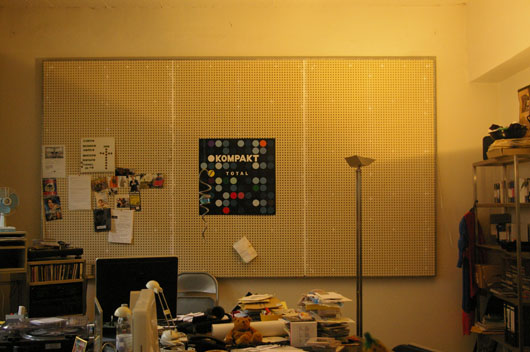
Similar to the design aesthetic that has marked Kompakt’s records over the years, the imprint’s facilities also emphasize a clean and crisp design. The record store in particular is bright and inviting while also being incredibly spacious—much more so than the usual cramped-between-the-crates vinyl shop—and impeccably organized. In seeing what Kompakt has built with its success, one is able to find clues as to what has likely led to it. Two decades after its founding, and with some incredibly pioneering and successful records in its catalog, Kompakt is still very much an organization that recognizes the importance of the people who make it up. Whether its the artists who make the music, the staff that helps accomplish the necessary tasks, or the customers and fans who support the imprint, all are given a comfortable and enjoyable space to exist within the facility. All in all, Kompakt’s Cologne headquarters serve as an inspiring holy ground for those who have grown up with the label or simply watched it become a staple for international electronic music over the years.
Düsseldorf’s music scene should not go overlooked.
The capital city of Germany’s North Rhine-Westphalia state, Düsseldorf, is widely known for its contributions to the fine-art world, thanks in large part to the city’s renowned Kunstakademie Düsseldorf arts academy. In the field of modern music though, Düsseldorf is likely best known for being the place where pioneering electronic outfit Kraftwerk formed and, later, Krautrock innovators Neu! (a group, for those who aren’t aware, formed by musicians Klaus Dinger and Michael Rother after their split from Kraftwerk in the early ’70s). As such, our tour of the city began outside what was Kraftwerk’s Kling Klang studios. Located in one of the bleaker parts of the city, all that currently commemorates Kling Klang is a deteriorating wheatpaste image of the quartet, apparently placed onto the dusty yellow wall by a renegade street artist.
Top: The outside of Kling Klang Studio; Bottom: Hauschka (photo by Jinesop Lee)
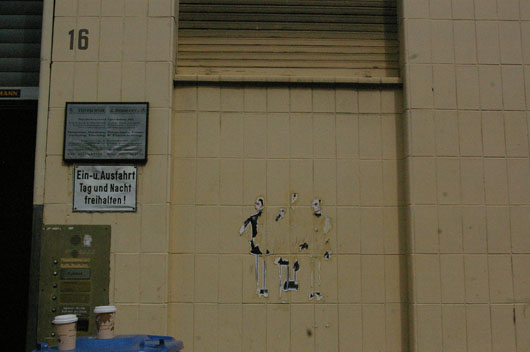
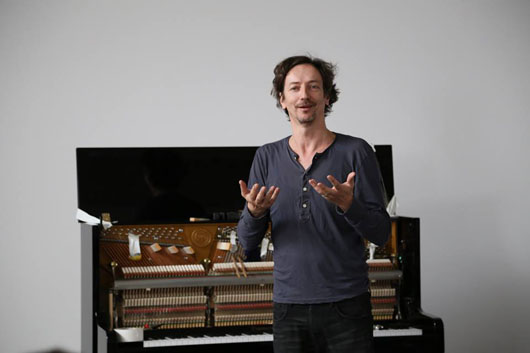
In the end, this is not a complete loss, as Kraftwerk, and Neu! for that matter, are certainly not outfits which have gone underappreciated in the long run. But the looming stature of these groups may currently overshadow the new wave of creative music coming from Düsseldorf. Led by the work of adventurous pianist and producer Hauschka, the city’s emerging crop of musical endeavors partially prides itself on bucking the more predictable dancefloor trends of its German counterparts, namely Cologne and Berlin. Gathered in Salon des Amateurs (referred to by our tour guide, an extensively knowledgeable hometown journalist, as the “living room” of the city’s scene) on a Tuesday night, much of Düsseldorf’s music community accompanied us touring journalists for a performance by a local duo consisting of veteran electronic musician Stefan Schneider and percussionist Sven Kacirek and a particularly adventurous DJ set which soundtracked the many informal introductions of the night. Our particular conversations led us to discover the music of Krautrock-indebted, synth-obsessed trio Stabil Elite, micro-piano manipulators Grandbrothers, and local labels such as the vinyl-only Themes for Great Cities and the longstanding Level imprint. Is there a musical revolution brewing is Düsseldorf? No, probably not, but there is surely a wealth of quality, adventurous music that deserves a closer look.
The inside of the German Reichstag building
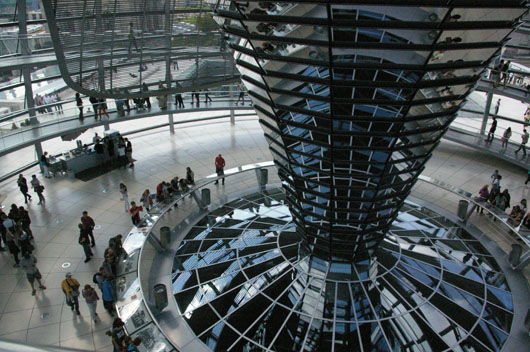
Berlin is thriving.
Our German tour only allowed for two days in Berlin, a city whose reputation as a bustling haven of music and culture has been spreading far and wide for some time now. In truth, 48 hours is not nearly enough time to come anywhere close to grasping the entire scope of Germany’s capital city and its overflow of clubs, creative outlets, and immense history. Still, it seems safe to say that Berlin is a modern metropolis that is culturally thriving on a scale unparalleled by most current cities. Of course, Berlin’s club scene has been regarded as one of the highest quality; venues such as Berghain/Panorama Bar, Tresor, Weekend, and Watergate have gained international notoriety, but there is also a seemingly endless amount of clubs whose reputations may not reach as far but who similarly strive to present well-curated programs and unique atmospheres. When compared with the status quo in the US, the regulations surrounding alcohol consumption, noise, and opening and closing times placed on these clubs are refreshingly lax, and when combined with the amount of options one has in terms of nightlife, it makes Berlin an unbelievably rewarding playground for those seeking genuine quality in their clubbing experiences.
But Berlin’s club scene is not the only thing worth noting, as many of the city’s other facets are equally thriving. Beyond clubs and dance music, the entire Berlin music industry appears to be growing exponentially, and the amount of street art and public projects underway suggest the same for the city’s visual-art scene as well. During our limited time in Berlin, what really stuck out to us was this idea that any empty building, vacant lot, or underused parcel of space could become, well, just about anything else. As we jaunted around Berlin’s Kreuzberg neighborhood—one of the “hipper” parts of town, though not one currently immune to the growing reach of gentrification—we visited the Paloma Bar and Schneiders Laden gear store, each of which had been opened inside what was formerly a rundown housing project. There was also the Festaal Krezbuerg club and event space (sadly, now severely damaged due to a recent fire), which repurposed an old Turkish music hall, and Club XXXX, an open-air venue that was recently opened along a thin strip of land next to the Spree River and populated with artsy furniture pieces and intriguingly inviting corners. These places were all different, but what tied them together was the notion that one’s vision is the only limitation to turning a forgotten space into something new and exciting.
Top and Middle: Inside Schneiders Laden; Bottom: Spacehall record shop
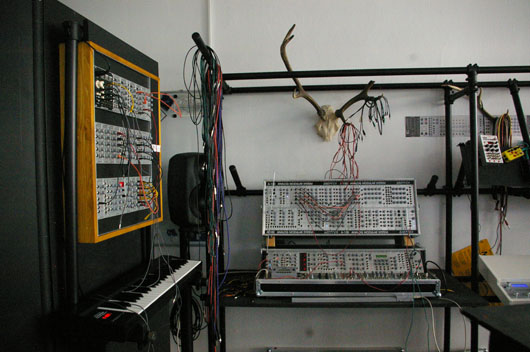
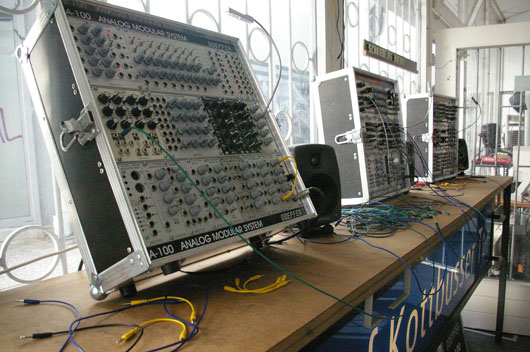
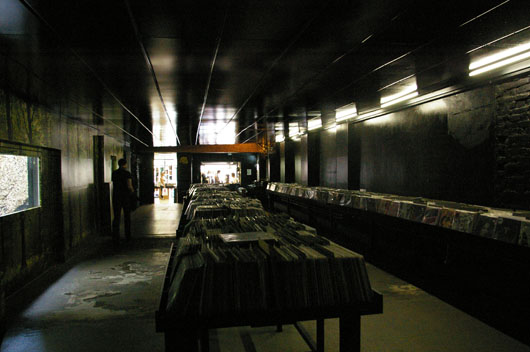
Needless to say, our sampling of Berlin was a small one, but the time we spent there nonetheless still left us with the overpowering impression that the German capital is flourishing at the moment, especially when one considers the plethora of historical buildings, the city’s breathtaking parks, and its active urban landscape, which comes hand in hand with the limitless amount of art and music happening on the ground.
Germany’s electronic music history is worth preserving.
Throughout our tour, we had a few opportunities to learn about a number of the historical places and outfits which contributed to the early formative days of German electronic music. The most impressive example was in Cologne, where we visited the Studio für elektronische Musik, a reassembled sound studio that was originally put together in 1953 for Westdeutscher Rundfunk (a.k.a. WDR, the West German Broadcasting Corporation). The place also served as one of the first laboratories for electronic-music production, utilizing tape machines, basic oscillators, and, later, early synthesizers to create electronic compositions. Originally started by Werner Meyer-Eppler, Robert Beyer, and Herbert Eimert, the Studio für elektronische Musik was later used by pioneering composers such as Karlheinz Stockhausen and Gottfried Michael Koenig. Today, the studio has been moved out of its original location to the outskirts of Cologne; most of its equipment is in working order, and we were lucky enough to see a presentation of how the various tape machines and pieces of equipment were used during the facility’s existence to create some of the earliest forms of electronic music.
Inside the Studio für elektronische Musik
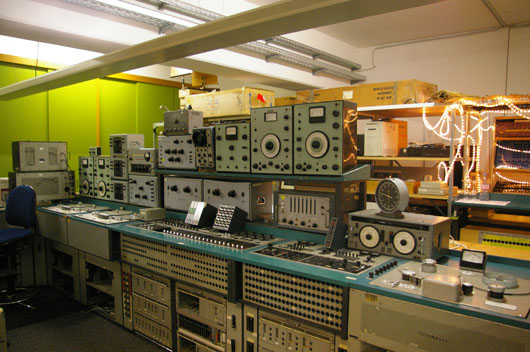
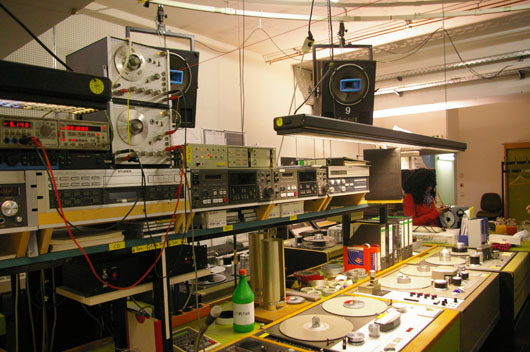
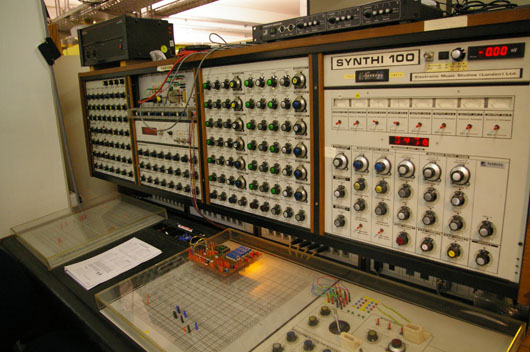
While the studio is currently mostly operational, one does wonder if the skills needed to operate and maintain such a place are being passed on to a younger generation. Sure, the techniques used then may be antiquated now—especially in comparison to today’s computer production programs—but there does seem to be a certain value in keeping places like Studio für elektronische Musik available to visit and possibly even use in the future. Given the rapidness with which electronic music evolves, preserving some of the anchors representing its earliest stages is likely a cause worth supporting.
Kraftwerk’s ‘1 2 3 4 5 6 7 8’
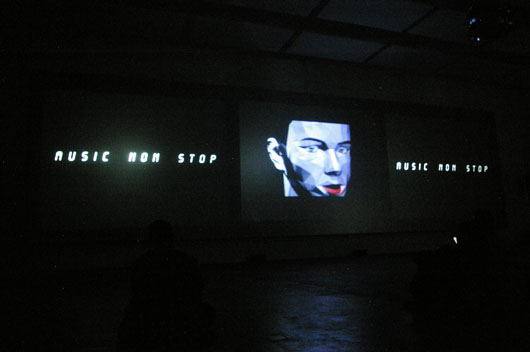
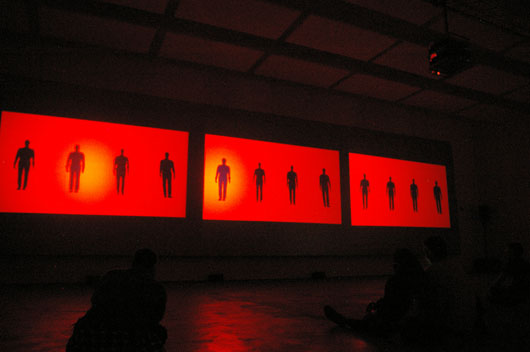
Kraftwerk’s 3-D video exhibition is actually pretty amazing.
On our final morning in Berlin, the group was invited to watch Kraftwerk’s 3-D video installation, 1 2 3 4 6 7 8, currently housed at the Sprüth Magers gallery. The 90-minute piece—whose title references the eight original albums which make up the group’s retrospective box set The Catalogue—has been adapted from its recent handful of live performances in order to be shown now in this new, more intimate context. While we sat on the floor of the gallery, an array of images flashed across three screens that took up the entire opposite wall; the mixture of animated design graphics and computer-rendered characters and movement accompanyied eight songs perfectly. While the video installation wasn’t without its expectedly cheesy moments (especially the segment for “Autobahn”), being able to experience Kraftwerk’s music in that setting proved unexpectedly enjoyable and entertaining, while also providing a platform to again appreciate the impact of the pioneering outfit’s work on basically the entire spectrum of modern music. Really, it’s hard to think of a group whose music and image better suits a 3-D video installation. 1 2 3 4 6 7 8‘s run at Sprüth Magers is up at the end of this month, but hopefully it will begin making its way around the globe soon.

